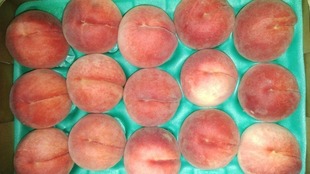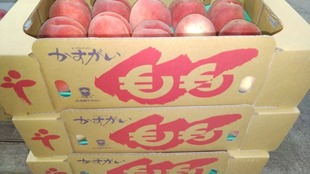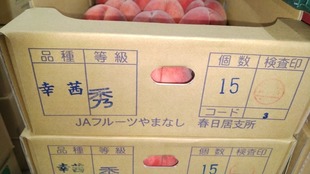In Miho Village, a notification system will begin in January 2023. In order to prevent fraudulent acquisition of copies of resident records, certified copies of family registers, etc., when a copy of a resident record is delivered to a person's agent or third party, the fact that the copy was delivered to a person who has been registered in advance must be confirmed to the person concerned. This is a system to notify the. Copies of resident records and family registers may be obtained by third parties if they meet the requirements. It seems that the identity notification system is not a system for refusing requests from third parties.
The Costa Rica system (Costa Rica Hoshiki) is one of the election tactics in the single-seat constituency proportional representation simultaneous system. A method in which one person stands alone in a proportional representation district and is replaced at each election. Miura Village Factory: Japan TI Company Overview: Texas Instruments Japan Limited, Established in May 1968, Capital: 500 million yen, Representative: President Samuel Vicari, Number of Employees: Approximately 1,200, Main Products: Integrated Circuits (ICs), DLP® Business History: A foreign-affiliated supplier that manufactures and sells semiconductors with Texas Instruments Incorporated (Headquarters: Dallas, Texas, USA, abbreviation: TI) as its parent company. We support our customers’ global business by providing a wide product portfolio equipped with cutting-edge technology, a production system that makes use of the TI worldwide network, and a full range of sales and technical services. History: 1968 Nippon Texas Instruments Co., Ltd. established 1973 Hiji Factory (Oita Prefecture) started operation 1980 Miho Factory (Ibaraki Prefecture) started operation 1985 Received the Deming Prize Implementation Award (Hiji Factory) 1998 ISO14001 (Miho and Hiji(Hayami District)factories) 1999 Integrate head office functions into Nishi-Shinjuku Mitsui Building 2001 Merger with Nippon Bar-Brown Co., Ltd. 2007 OHSAS 18001 certification (Miura and Hiji factories) 2008 Japan TI In 2010, the 40th anniversary of the company’s establishment, the Aizu Factory (Texas Instruments Semiconductor Japan) started operation. 2011 Integrated with National Semiconductor Japan 2013 Opened Hiji Packaging Center 2018 Celebrated 50th anniversary of Japan TI 2019 Changed corporate form to limited liability company, company name changed to “Texas Instruments Japan Limited Liability Company” 2022 Tokyo Relocated headquarters functions to Minato Ward (Shinagawa Season Terrace). Miho Village, Inashiki District, Ibaraki Prefecture, is known as the JRA Japan Central Racing Association (Nishi-Shimbashi, Minato Ward, Tokyo, established on September 16, 1964, capital: 4.9 billion yen). 24,129,000 yen; fully funded by the government). The center was established in 1979. Mushroom production began in the neighborhood in 1982. This year is too close. It doesn’t seem like a mere coincidence. I’ve heard that mushroom cultivation is an effective use of the large amounts of bedding produced by the stables. It seems that this bed straw is essential for making delicious mushrooms. It seems that the discharged bedding is mixed with water, chicken manure, and lime at the compost center to make compost. It seems that this compost is used to make a medium and inoculated with a general mushroom inoculum for cultivation. JA Suigo Tsukuba in Ibaraki Prefecture will start a “food drive” from March 1, 2022 to collect food that is dormant at home in order to support single-parent households and other households in need. Collection boxes were set up at a total of 10 farmers’ markets within the jurisdiction, and it seems that the collected food items were distributed to needy households. Just like these people, we must take seriously the reality that single-mother households are becoming poorer. Excerpt from Yoshimoto Mushroom Co., Ltd. Founded in December 1987, business description Mushroom cultivation and shipping Number of employees: 300 (120 full-time employees, 180 part-time employees) ) Planned production volume for the entire group is 3,800 tons (2022). According to the president, mushroom cultivation is said to be particularly delicate and difficult among mushrooms. In addition to meticulous temperature control, sanitation management against germs and pests seems to be indispensable. Mushrooms are an honest ingredient that can change the scent and taste depending on how you grow them. Using pesticides makes management easier, but grown mushrooms smell like chemicals. At Yoshimoto Mushroom, we grow our mushrooms without the use of pesticides in order to deliver not only delicious mushrooms but also safe and secure mushrooms to our customers. Sparing no effort and effort, he grows delicious mushrooms one by one with affection like his own child. Also, although the consumption in Japan is still small, it is the most eaten mushroom in the world. Meat, vegetables, fish We are proud of being compatible with basically any ingredients. When it comes to mushrooms, both in Japan and around the world, most people think of white mushrooms, but it seems that brown mushrooms actually originate. It seems that you can enjoy a rich flavor that is different from the mellow taste of the white variety. Although they are all mushrooms, they are popular as ingredients with different characteristics and charms. In addition, it seems that each mushroom is called by a name depending on its size. 1, giga mushroom, 2, jumbo mushroom. One of its features is that skilled employees select and grow mushrooms that are likely to grow large. It seems that only about 1 out of 100 normal-sized mushrooms turns into a jumbo mushroom. It seems that you can enjoy the texture and rich taste that you can not taste with normal size mushrooms. In addition, like jumbo mushrooms, mushrooms selected by skilled employees are left and cultivated. It seems that one out of 100 jumbo mushrooms (1 out of 10,000 normal size mushrooms) is a giga (13 cm or more), a very rare product. It seems that the mushrooms that were hidden in the shadows and forgot to grow grew big, so they started cultivating them. Yoshimoto Mushroom sells mushrooms directly at the packing center in Adamadai, Katori City and at the Miho Plant. If you can contact us by phone in advance, it seems that it is possible to hand over the product without waiting. Mushrooms are grown all year round, so they can be purchased at any time, but it seems that we may not be able to meet your request from autumn to winter. In Miho Village, agricultural products are plentiful. Miho rice grown is high-quality rice cultivated using fully-ripened compost from the tressen straw and using as little chemical fertilizers and pesticides as possible. From 2006 to the present, it has been selected as one of eight brands of “Ibaraki’s proud Koshihikari series” based on production volume, cultivation method, taste, etc. as a representative of Koshihikari rice produced in Ibaraki Prefecture. Ko-itten rice is JA Inashiki’s brand rice Koshihikari, which is cultivated using fully-ripened compost from Toresen straw and using as little chemical fertilizers and pesticides as possible. In addition, as a drying method that is gentle on rice, a solar drying facility has been introduced to bring it closer to drying in the sun. The brand name of the figs is “Treasure Box of Clay”. Cultivated without the use of pesticides and chemical fertilizers. Rich in vitamins and minerals, this healthy fruit has a chewy texture and a sweet taste. The brand name of shiitake mushrooms is “Forest box”. Believing only in the power of trees, shiitake mushrooms grown completely pesticide-free using raw wood. Under the motto of “Freshly harvested flavor at the table”, it seems that pre-cooled shipment and garnishing are carried out. The strawberry variety is Tochiotome. Raised in fertile rice paddy soil, it boasts outstanding sweetness. Lotus root has long been popular as a food of perpetual youth and longevity. In Miho Village, cultivation is thriving, mainly in the Funako area on the lakeshore, and boasts a healthy and crispy texture. Nanko japanese ume is a good product with small seeds and thick flesh. Umeboshi, plum juice, and plum wine are popular. Paprika is a vegetable with excellent features such as capsanthin’s antioxidant power and nutritional value such as carotene and vitamin C. It seems to be cultivated in one of the largest paprika hydroponics facilities in Japan. As for processed marine products, smelt, whitebait, shrimp, etc., landed in Lake Kasumigaura in front of you, are processed at the processing plant in the village on the same day. It has inherited the traditional manufacturing method since the Meiji period, and features an old-fashioned handmade taste. As for livestock products, dairy farming, fattening cattle, and pig farming are popular. Compost is also used in gardening and agriculture. Eternity, Environment, Earnest. Using these three words starting with “E” as keywords, “We Think E, MIHO” seems to be the catchphrase of the village. This is based on the idea that villagers and the government will form a scrum to “implement resident activities that emphasize the ‘environment’ one by one ‘sincerely’ from their immediate surroundings in order to enable the ‘persistent’ development of the region.” Let’s go.” It’s a wonderful thing, and it seems we need to emulate it. The first of these activities is the branding of agricultural products. Regarding the unified branding, since the foundation of agriculture is the “power of the soil”, organically grown agricultural products that are pesticide-free and low-pesticides will be created from the “Treasure box of soil” and the “power of trees”. With the brand name “Forest box”, it is clear to consumers that it is an eco-friendly agricultural product. Miho Village in Inashiki County is located on the south bank of Lake Kasumigaura overlooking Mt. Tsukuba. A large-scale shell midden from the Jomon period, it is located on the island-shaped “Anju plateau”, which is thought to have been an island in Kasumigaura at the time. There are eight large and small shell middens left on the slopes surrounding a vast plateau with an area of about 0.03 km2. The shell mound dates from the early Jomon period (approximately 7,000 years ago) to the late Jomon period (approximately 3,500 years ago). In 1879, Chujiro Sasaki (1857-1938: born in the Fukui clan, entomologist in the Meiji, Taisho, and Showa periods. Pioneer of modern sericulture and silk-reeling studies), who was a student at the University of Tokyo, Kai Iijima (1861-1921: Born in what is now Hamamatsu City, Shizuoka Prefecture, was a zoologist and ichthyologist in the Meiji and Taisho eras. He has extensively studied sponges, birds, and parasites, and played a major role in advancing Japanese zoology. Founded by the Ornithological Society of Japan), this site was the first site excavated by Japanese people, and is said to be the origin of Japanese archeology. In 1998, researchers and the surrounding area A village rich in nature and history, where various activities by the development company and local residents have borne fruit, and it has been designated as a national historic site as a representative shell mound site, and efforts have been made to preserve it. It is also famous for its safe and high-quality agricultural products and marine products from Lake Kasumigaura. Geographically, it is close to Tsukuba Science City and Narita, and is famous as a “town” that is convenient for connecting to the Ken-O Expressway and Joban Expressway, which are being developed as roads connecting these core cities and the Tokyo metropolitan area. Taking advantage of this environment, preserving the lakeside culture that has been nurtured since ancient times, and sensitively feeling the winds of a new era, we will create a community where people can live, study, work, and play in Miho Village, and villagers’ cooperatives with the participation of villagers. We are promoting the development of a working town. Also, it seems that there are only two places in Japan where JRA training centers are located. The other is in Ritto City, Shiga Prefecture, which was opened in 1969 in the hilly area of the Kinkatsu mountain range with Lake Biwa nearby. Currently, it seems that Miura Village is the east base and Ritto City the west base for training racehorses. Taking advantage of these “Miho-ness”, we are promoting the development of a town that will open up the flower of lakeside culture. The Ritto Training Center (Ritto-Tresen) has six track-type training courses, a slope training course with a total length of about 1 km, and a racehorse swimming pool in a vast site of about 1.5 million square meters (about 40 Koshien stadiums). , Has various training facilities such as Shoyo long roofed passageway (originally having an earthen floor and used as a bridle path). It also has facilities such as stables for over 2,000 racehorses, a racehorse clinic, a conditioning room, and a riding garden, and it seems that they are operated daily to create strong horses that can compete in the world. Yoshimoto Mushroom Co., Ltd.’s mushroom cardboard inspection and certification system for organic foods: The organic JAS mark is a mark with the image of the sun, clouds and plants. It represents food produced by the power of the natural world without relying on chemical substances such as pesticides and chemical fertilizers, and is attached to agricultural products, processed foods, feeds, livestock products and algae. “Organic agricultural products” are those produced in paddy fields and fields that have been organically managed for at least two years (three years for perennials) before sowing or planting, without using prohibited pesticides, chemical fertilizers, or genetic modification technology. “Organic processed foods” are those that use 95% or more of such organic agricultural products and are manufactured in such a way that chemicals and non-organic raw materials and products are not mixed. It seems that it is prohibited to use the words “organic” or “organic” in the names of agricultural products and processed foods that do not have the organic JAS mark affixed. In addition, organic farming not only provides safe and secure food, but also maintains and enhances the natural circulation function, creates healthy and fertile soil, and considers environmental problems. Before the establishment of the organic JAS system, various expressions such as “自然”, “organic”, “有機”, and “natural” came to be used with the spread of organic farming, including what kind of production process actually went through. It seems that it was sometimes difficult for consumers to decide “which one is what I want”. In the midst of such confusion and the trend toward international standardization of organic agricultural products, I hear that the JAS Law (Act on Standardization, etc. of Agricultural and Forestry Products) was revised, and the “organic certification system” began. It seems that only those that have been inspected and certified by a “registered certification body” authorized by the Ministry of Agriculture, Forestry and Fisheries can be labeled as “organic agricultural products” or “organic processed foods.” According to JA Group Ibaraki Agricultural Administration News, the situation surrounding domestic agriculture, etc., the Diet, the government, and the ruling party have decided to spend 3.5 trillion yen as a reserve fund to counter rising prices. On September 20, 2022, the government will spend a total of 3.5 trillion yen from the contingency fund for fiscal 2022 in order to allocate it to measures against rising prices and the development of the medical system for the new coronavirus. Cabinet decision to in addition to spending 1.3 trillion yen to fund fuel subsidies such as gasoline until the end of the year, he spent 800 billion yen to increase support grants that local governments can use to secure hospital beds for the new coronavirus. Financial resources for local governments to take countermeasures against soaring prices according to the actual situation of the region As a result, a new “local subsidy to support soaring prices of electricity, gas, food, etc.” He took measures of 600 billion yen. As examples of initiatives recommended to local governments, the government has shown measures to support the shift from soaring chemical fertilizers to fertilizers that make use of local resources, and countermeasures against soaring electricity costs for irrigation facilities in land improvement districts. Is it seems that he is scheduled to formulate a comprehensive economic package in October following this contingency expenditure, which will include countermeasures against soaring prices. In addition, the Board of Audit proposed a review of the operation of the government’s stockpiled rice. On September 14, 2022, the Board of Audit compiled the results of its inspection of domestic measures for the Trans-Pacific Partnership (TPP). Regarding the government’s stockpile of rice, the amount of rice purchased exceeds the amount imported under the TPP quota, and it is a problem that it is an excessive measure, and has proposed an inspection and review. Agriculture Minister Tetsuro Nomura (born in Hayato Town, Aira District, Kagoshima Prefecture, appointed in the second Kishida reshuffled cabinet) seems to have indicated at a press conference after the cabinet meeting on September 16 that he has no choice but to reconsider. National Strategic Special Zone WG private sector member replacement. Private-sector members of the government’s National Strategic Special Zones Working Group, which discusses special provisions for farmland acquisition by general companies, are replaced. Agricultural Administration Information-No.52 (October 6, 2022).

In fact, mushrooms are the most consumed mushrooms in the world. In Japan, consumption is still low, so we are trying to boost the market by participating in exhibitions. Yoshimoto Mushroom Co., Ltd.’s market share of mushrooms in Japan seems to be ranked first and second every year. In order to make delicious mushrooms, we are very particular about making this medium and use the latest equipment from Holland to make fungal beds. Because the secondary fermentation and culturing of the bacteria are carried out in dedicated equipment, it is possible to deliver high-quality thick mushrooms that are packed with umami.

It has a rich flavor and aroma, and is suitable for simmered dishes and soups. It also has a longer shelf life than the white variety. With the P2P3 tunnel system of the culture medium manufacturing facility that started operation in 2020, we have achieved complete in-house production of culture medium. With the in-house production of the culture medium, we planned to expand the bacterium house.








